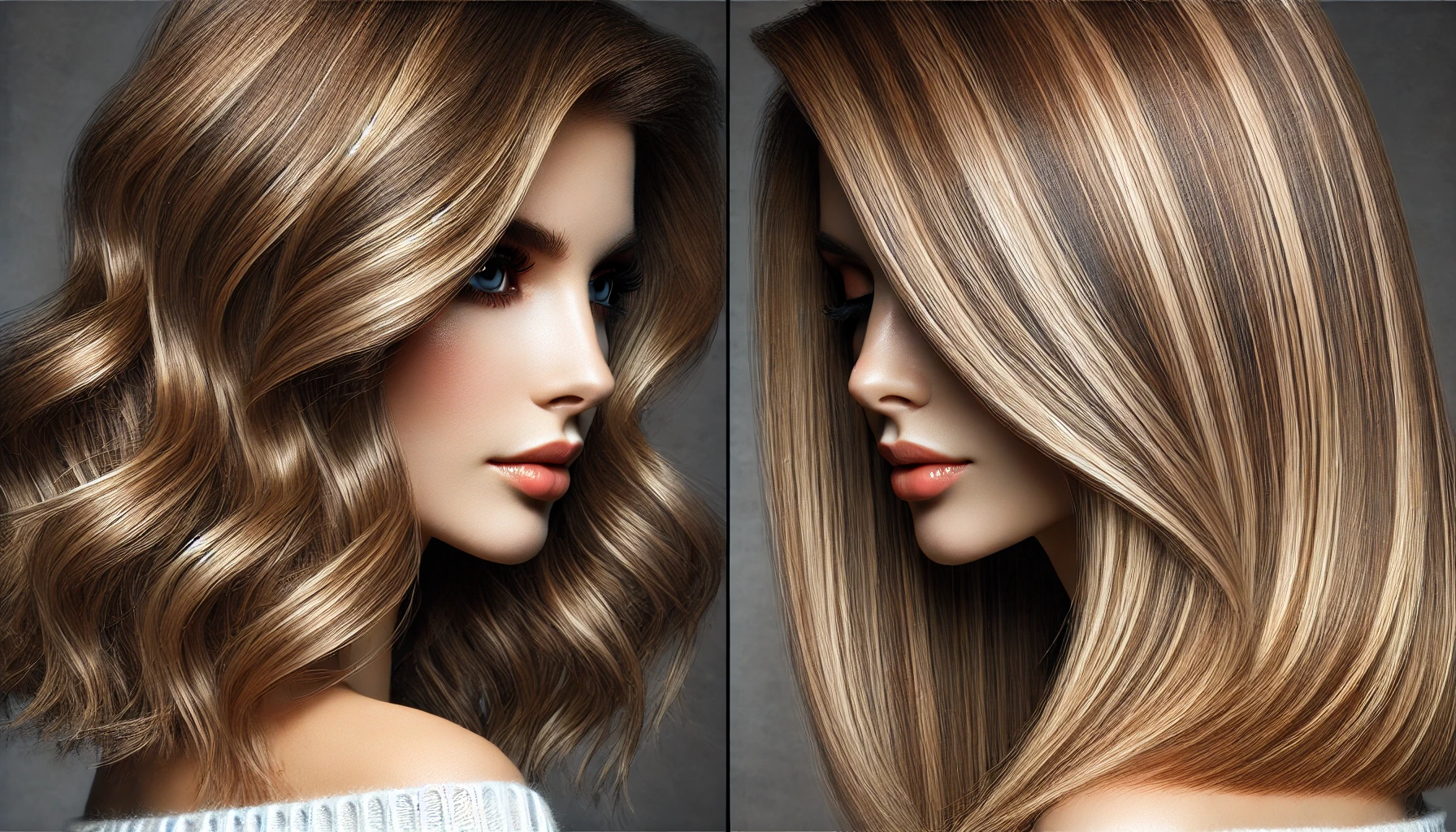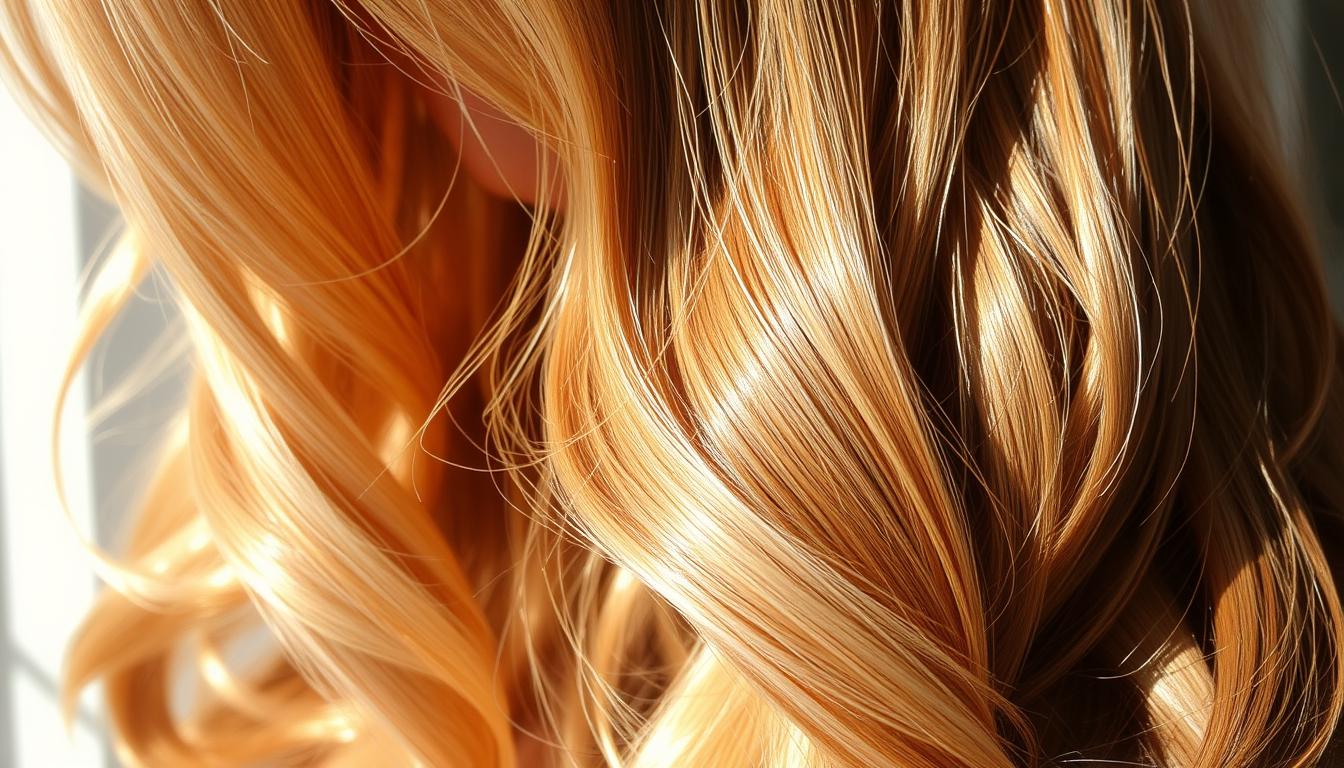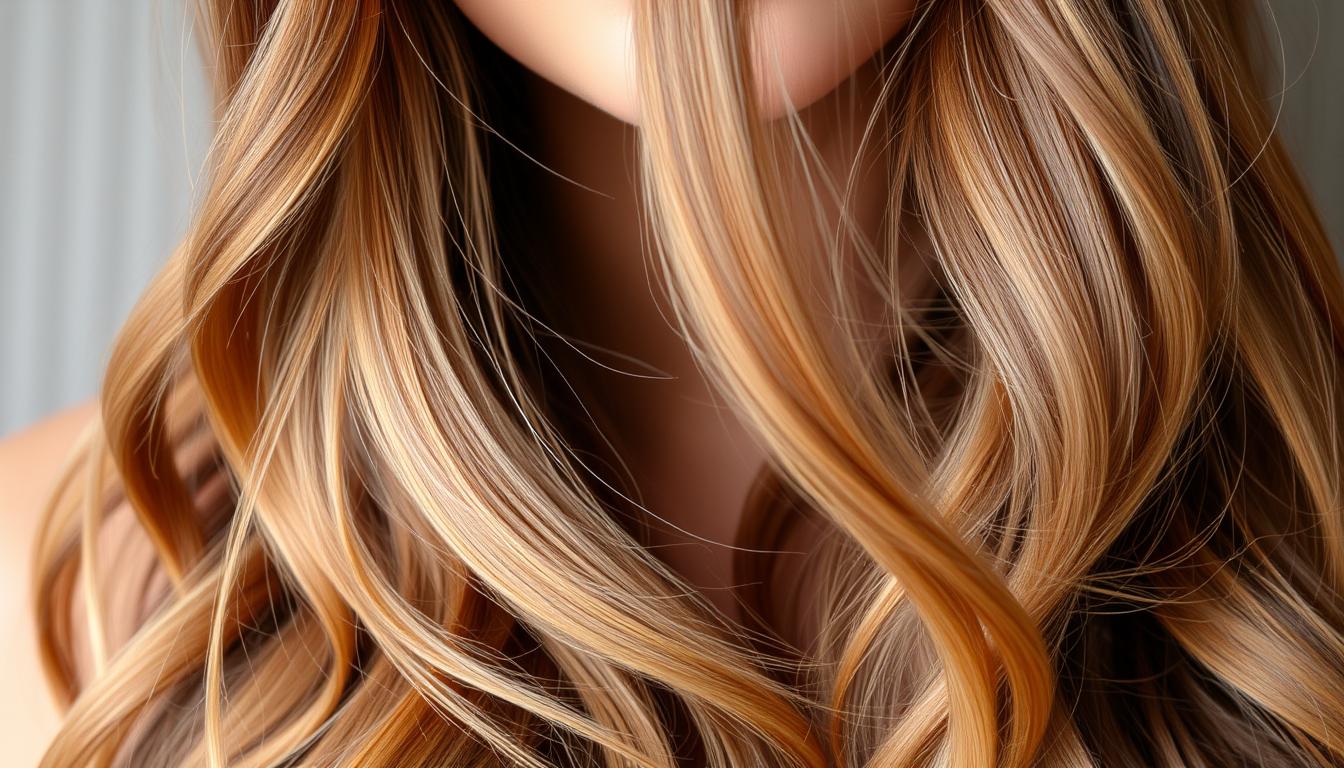 January 14, 2025 | Hair Color
January 14, 2025 | Hair ColorHighlights are a favorite for adding depth and brightness to hair. Yet, choosing between partial and full highlights can be challenging. Each style offers unique benefits, depending on your desired look, budget, and maintenance needs.
Highlights involve lighter colors strategically placed in your hair. They can be applied using foils or freehand techniques like balayage. Partial highlights focus on sections around the face for a brighter, framing effect. Full highlights, by contrast, color every section of your head for a dramatic, all-over lightened look.

Choosing between partial and full highlights depends on your desired impact and commitment level. Partial highlightsare ideal for a subtle change or a color test. They’re also more affordable, costing about $100 less than full highlights. Full highlights, on the other hand, are for those seeking a bold, dramatic change. They offer complete coverage, transforming your hair color dramatically.
Key Takeaways
- Partial highlights are applied to specific sections of hair, usually around the face, while full highlights involvecoloring every section of the head.
- Partial highlights are more budget-friendly, costing around $100 less than full highlights on average.
- Full highlights provide a dramatic, all-over lightened effect, perfect for those wanting a bold look or major color change.
- Partial highlights are a gentler technique, causing less damage to hair as fewer strands are bleached compared to full highlights.
- The growth visibility of partial highlights can stretch beyond four to five months, while full highlights may require more frequent maintenance visits.
Introduction
Highlights are a favorite for those looking to change their hair look. They involve lightening specific sections to add depth and contrast. Whether you want a natural look or something bold, knowing the types of highlights is essential.

What Are Highlights?
Highlights lighten specific hair sections to enhance depth and dimension. You can customize them to fit your style, from a few strands to a full head. Techniques like foiling, balayage, or babylights create different effects.
The amount and placement of highlights greatly affect your look. Partial highlights focus on the top and sides, while full highlights cover the whole head for a more dramatic change.
Why It’s Important to Choose the Right Highlight Style
Picking the right highlight style is key to getting the look you want. It involves considering maintenance, cost, and hair health. Partial highlights are great for a subtle look and are easier to maintain. Full highlights, while more dramatic, need more frequent touch-ups and care.
Your hair type and texture influence the best highlight style for you. Fine or thin hair benefits from partial highlights to avoid over-processing. Thick or coarse hair, on the other hand, can be transformed with full highlights to add movement.
The Basics of Hair Highlighting
When it comes to highlighting your hair, you have two main options: partial highlights and full highlights. Each approach offers a unique way to transform your look, whether you’re seeking a subtle change or a dramatic makeover.
What Are Partial Highlights?
Partial highlights involve lightening specific sections of your hair, typically focusing on the face-framing pieces and the top half of your hair. This technique is ideal for those who want to add dimension and brightness to their locks without committing to a full head of highlights. Partial highlights usually include up to 20 foils and can range in cost from $100 to $300, depending on your hair length and the salon you visit.

One of the main advantages of partial highlights is that they offer a low-maintenance option. Because the lightened sections are concentrated around your face and the top of your head, the grow-out process is less noticeable compared to full highlights. This means you can go longer between salon visits, saving you time and money in the long run.
What Are Full Highlights?
Full highlights, on the other hand, involve lightening every section of your hair from root to tip. This technique is perfect for those who want a more dramatic color change or are looking to transition from a darker shade to a lighter one without fully bleaching their entire head of hair. The cost of full highlights starts at around $175 and can exceed $500, depending on your hair length, thickness, and the experience level of your stylist.
While full highlights offer a bold and transformative look, they do require more upkeep than partial highlights. Because your entire head of hair is lightened, regrowth will be more noticeable, and you may need to visit the salon more frequently to maintain your new color. If you’re ready to make a statement with your hair, full highlights are definitely worth considering.
Comparing Partial and Full Highlights
Choosing between partial and full highlights requires understanding several key differences. Partial highlights, such as face-framing or half-head techniques, focus on select strands. In contrast, full highlights provide complete coverage from top to bottom. Each option has its own impact on hair health and cost.
Coverage: What’s the Difference?
Partial highlights cover a half head of hair, sitting between face-framing and full highlights. Face-framing highlights, a popular choice, focus on strands around the face. Full highlights, applied throughout the hair, offer a uniform lightening effect. This can lighten hair by 2-3 shades, depending on the technique and application.
Time Commitment
Partial highlights require salon visits every 8 to 12 weeks, about 4 to 6 times a year. Full highlights need visits every 6 to 8 weeks, or 6 to 8 times annually. Subtle highlights, like partial techniques, may require less frequent touch-ups. High-impact color choices for full highlights, on the other hand, may need more frequent visits to maintain vibrancy.
Impact on Hair Health
Face-framing highlights involve less chemical processing, making them less damaging. They exclude the underside of the hair, reducing exposure to lightening agents. Full highlights, covering the entire head, can be harder on hair due to extensive chemical application.
It is advised not to get full highlights every time, as regrowth is less noticeable beneath the top layers.
Cost Considerations
Partial highlights are often more budget-friendly, costing less than full highlights. Prices vary by salon and region. Face-framing highlights, for instance, are typically less expensive due to reduced product usage and quicker application. Alternating between partial and full highlights can help maintain dimensional color while minimizing damage and expense.
Style and Aesthetic Considerations
Choosing between partial and full highlights depends on your personal style and desired look. Partial highlights subtly enhance your natural hair color. Full highlights, on the other hand, offer a more dramatic change.
How Partial Highlights Frame the Face
Face-framing highlights involve strategically placing lighter strands around the face. This technique adds dimension and depth without a full head of highlights. It creates a sun-kissed, youthful look that complements your natural color.
How Full Highlights Transform Overall Hair Color
For a significant change, full highlights are ideal. They evenly distribute highlights throughout your hair, transforming your overall color. This option is great for brightening your hair, adding depth, or making a bold statement.
Natural vs. Bold: Which Option Suits Your Style?
Consider your preference for a natural or bold look when choosing highlights. Partial highlights suit those seeking a subtle, sun-kissed appearance. Full highlights are for those who want a dramatic change.
Specific color options for partial highlights on black hair include caramel blonde, deep purple, chestnut, rose gold, and copper highlights.
Blending and Maintenance
Blending and maintenance are key, regardless of your highlighting choice. Partial highlights need less upkeep, blending well with your natural color. Full highlights, though, require more frequent touch-ups to keep the look seamless. Quality hair care products are vital for highlighting longevity, lasting beyond six weeks.
Who Should Choose Partial Highlights?
When deciding between full blonde highlights or partial foil highlights for brown hair, it’s vital to consider your personal style and hair goals. Partial highlights are perfect for those wanting a subtle enhancement of their natural color. They offer a budget-friendly way to achieve beautiful, dimensional hair without a drastic change.
Ideal Hair Types for Partial Highlights
Partial highlights are incredibly versatile, suitable for various hair types. They can be tailored to match your hair color and texture, making them accessible to everyone. Face-framing highlights, for instance, focus on the front strands, highlighting your features and adding a soft glow.
When to Opt for a Subtle Look
For those desiring a hair brightening without a bold statement, partial highlights are ideal. They introduce depth and dimension while keeping the look natural. This approach is ideal for refreshing your style without the commitment of full highlights or a complete color change.
“Partial highlights are a great way to add a little something extra to your hair without going overboard. They’re perfect for creating a sun-kissed look that’s both natural and effortless.” – Carlos Alvarez, Owner of Trademark Salon
Who Should Choose Full Highlights?
For those seeking a significant hair color transformation or a bold new look, full highlights are an excellent choice. This method offers complete coverage, lightening your entire head for a dramatic effect.
Full highlights are perfect for those transitioning from dark to light hair. They can completely transform your style and refresh your look. Yet, it’s vital to remember that they’re best suited for healthy, unprocessed hair.
Ideal Hair Types for Full Highlights
Full highlights require a commitment to your hair’s health. Given their demanding nature, it’s essential to have strong, healthy hair. Those with naturally robust locks are often the best candidates.
When to Go Bold or Make a Major Change
For those ready to make a bold statement with their hair, full highlights are an ideal choice. They’re great for transitioning to a lighter shade or adding depth to your current color. They’re also perfect for special events, ensuring you look your best.
I wanted a complete transformation, and full highlights gave me exactly that. I feel like a whole new person!
Comprehensive Coverage
Full highlights offer extensive coverage, unlike partial highlights which only lighten specific sections. This results in a uniform, consistent look, ensuring your new color is evenly distributed.
It’s important to note that full highlights require more frequent touch-ups. As hair grows, the need for regular salon visits becomes apparent. Most clients opt for full highlights every 6-8 weeks to maintain their look.
Summary
Deciding between partial and full highlights hinges on your desired look, maintenance commitment, and budget. Partial highlights, like face-framing, subtly enhance hair with dimension and brightness. They cover about 50% of the head, costing less than full highlights due to less product and time needed. They’re great for those with darker hair wanting to try lighter shades or looking for a cost-effective option.
Full highlights, covering the entire head, offer a more dramatic change, perfect for bold transformations or embracing natural gray. They’re more expensive and time-consuming than partials, needing more frequent touch-ups as regrowth shows more. Yet, they can make thin hair appear fuller and thicker by adding dimension all over.
Choosing the right highlight option depends on your hair goals. At Trademark Salon in Houston, Texas, our award-winning stylists can guide you. They consider maintenance, cost, and hair health to help you decide between partial and full highlights. This way, you can achieve beautiful, dimensional hair that fits your style and budget. Contact us today!
Frequently Asked Questions
What’s the difference between partial and full highlights?
Partial highlights lighten specific hair sections, often around the face or on the top half. Full highlights, by contrast, color every section of the head. This results in a more dramatic, all-over transformation.
How do partial highlights frame the face?
Partial highlights are perfect for framing and brightening the face. They involve strategically placing lighter color pieces around the face. This technique enhances your features and gives you a more radiant look.
Can full highlights help me go from dark to light hair?
Yes, full highlights can transition dark hair to light without bleaching the whole head. Highlighting every section allows for a complete color change while keeping some natural color.
Which highlight option is more budget-friendly?
Partial highlights are generally cheaper than full highlights. They require less time and product. If you’re on a budget and want a fresh look, partial highlights are a cost-effective choice.
How do I choose between a natural or bold look?
For a subtle, sun-kissed look, partial highlights are ideal. If you want a bold change or a completely new look, full highlights are the better option.
What’s the maintenance like for partial vs. full highlights?
Partial highlights require less maintenance, as they grow out more subtly and need touch-ups less often. Full highlights, with their more dramatic color change, may need more frequent touch-ups to keep the look seamless.
Which highlight option is better for my hair health?
Partial highlights are less damaging to hair health, as fewer sections are processed. Full highlights, coloring every section, can be more demanding on the hair.
How do I know which highlight option is right for me?
The right highlight option depends on your desired look, maintenance preferences, budget, and hair health. A professional stylist can assess your hair and recommend the best technique to meet your hair goals.
